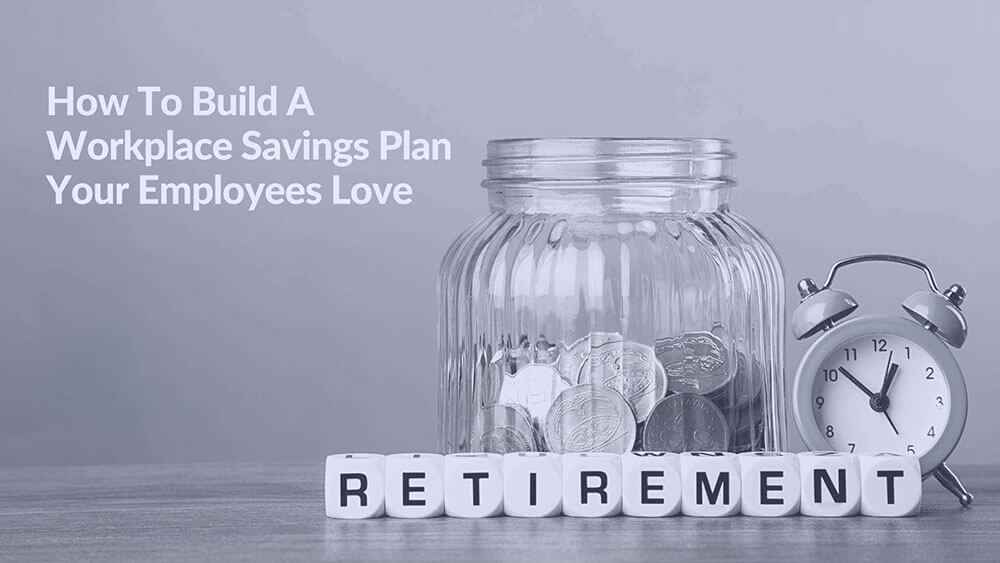
The concept of workplace savings plans is rooted in the history of both public and private sectors as far as the 1920s.
The concept of workplace savings plans is rooted in the history of both public and private sectors as far as the 1920s. It’s based on the simple fact that The Economy, in general, is a collection of Households which means that your customers are someone else’s employees, and your employees are someone’s customers. So empowering your employees pushes the whole economy forward, including your business.
Businesses now more than ever, use workplace savings plans as one of the main employee benefits to attract and retain top talents. And it’s becoming more apparent that employees value these benefits more than old fashioned perks. This is clearly aligned with the findings of the employee wellbeing survey conducted in the UAE. So if you are considering starting a savings plan for your team, here are the four key elements you should consider in this plan:
A key factor to consider while creating a workplace saving plan or choosing a provider is Financial Literacy. You should always consider financial education as an integral part of any financial wellbeing program you might offer. Not only that it increases the employee participation rate (which is the main goal of any employee benefits), but also, it builds more trust and integration between you as an employer and your team.
Multiple studies have shown that employees are more likely to participate and acknowledge workplace programs that offer broader guidance and inclusive support, not just as a benefit or a product.
You should be very clear to your employees right from the beginning of employment on what percentage of the base salary will you contribute every month towards the workplace retirement plan. You should also clearly define how the contributions might change over the period of employment and the vesting schedules (if applicable). However, it is also about transparency from the fund manager’s side.
Moreover, there should not be any hidden terms, the employees should have a clear understanding of how the fund operates, what kind of returns can be expected and as the employer, your duty lies in choosing a fund manager that works for the best interest of your employees. The terms and conditions should be laid out clearly to you and the employee, period!
What should never happen with a workplace savings plan? Your employees should never run out of options of what to invest in. Remember, money is very personal, based on age, financial situation, and risk appetite, the same fund will not work for everyone. The plan provider should help your employees make an informed decision. Not everyone is financially savvy and details of where the fund is investing should be laid out clearly in layman’s terms.
There should also be flexibility for employees to add their own contributions on certain months or on a recurring basis if they want. The process of adjusting/rebalancing the plan (where one can change which financial instruments the money is invested in, for example, different stocks, bonds, ETFs, commodities etc.) should be fairly simple too.
This one is a no brainer. The DEWS scheme initiated in 2020 by DIFC has its heart at the right place and the intentions are noble; however, one thing that is difficult to understand is its high fees. The fees you pay can be as high as 1.33% yearly, whereas returns can even be lower than that depending on the market situation over a particular year – this is way higher than a lot of other countries with a workplace retirement plan. We highlight the negative effect of fees on retirement investment returns.
The ideal workplace retirement plan should have low fees that work for both you as a company and your employees. This improves the return that employees will eventually receive and therefore helps you with keeping your employees happy. Plus, there should never ever be any hidden fees in a workplace savings plan.
A workplace saving plan should turn out to be profitable over the long term. If your employee decides to go for an investment plan which has its return linked to market conditions, then, there will be short-term volatilities and they may see their capital getting reduced. This may freak out many, particularly for those who are not really knowledgeable about investing in markets.
A good workplace savings plan should be part of a Workplace Financial Wellbeing Program to ensure that the employees will have enough knowledge about personal finance matters, how markets work, what are the risks, and how to reduce those risks, different investment schemes and can make the most informed decision about where to invest. There should be fixed return, zero risk plans for someone choosing for such plans as well.
This article is published as a series in partnership with FinFlx, your guide to workplace solutions.
For more information visit:
https://www.finflx.com or https://www.linkedin.com/company/finflx/
You can also connect with FinFlx through Instagram and Tiktok @finflxmena